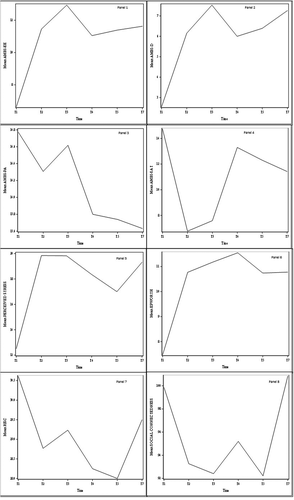Figures & data
Table 1. Study site, residency program, and study population baseline demographics.
Table 2. Survey timing and response rates.
Table 3. Change from baseline mean at each study timepoint.
Table 4. Differences between worst score and T7.
Table 5. Prevalence of survey scores suggesting resident impairment.
Figure 1. Trends in survey metrics over time.

